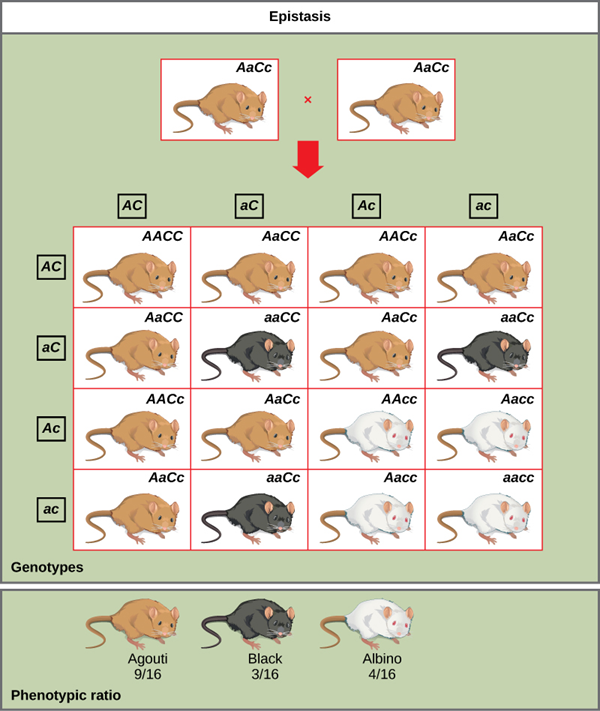The Genetics of Epistasis
Epistasis refers to the interaction between different genes where the expression of one gene masks or modifies the expression of another gene. Alleles involved in epistasis can influence the expression of other genes, altering the expected phenotypic ratios that would be predicted by Mendelian genetics.
There are two main types of epistasis:
-
Dominant Epistasis: In this type, the presence of at least one dominant allele at one gene locus masks the effects of alleles at another locus.
For example, in the coat color of Labrador Retrievers, the gene for pigment production (B) is epistatic to the gene for pigment distribution (E). The presence of a dominant allele (B) results in black pigment, regardless of the alleles at the second locus (EE or Ee).
Only when the dominant allele at the first locus is absent (bb) will the expression of the second locus determine the coat color (ee results in yellow).
-
Recessive Epistasis: In this type, the presence of a homozygous recessive genotype at one gene locus masks the effects of alleles at another locus.
An example is seen in fruit color in summer squash. One gene (C) controls the presence of color (yellow or green), while another gene (Y) controls the actual pigment production
. The homozygous recessive genotype at the first locus (cc) prevents pigment production, masking the effects of the second locus (YY or Yy), resulting in a yellow squash phenotype regardless of the alleles at the second locus.
Epistatic alleles often lead to unexpected phenotypic ratios in offspring, especially when considering the classic Mendelian ratios. Understanding epistasis is crucial in comprehending how different genes interact and influence the expression of traits in organisms.
Epistasis and Labrador Retrievers
Black is dominant to chocolate; represented by letters B (black) or b (chocolate)
Yellow is recessive epistatic (when present, it blocks the expression of the black and chocolate alleles) E or e
| Phenotype | Possible Genotypes |
| Black Lab |
BBEE | BbEE | BBEe | BbEe |
| Chocolate Lab |
bbEE | bbEe |
| Yellow Lab |
BBee | Bbee | bbee |
Example of a Cross - black lab (BbEe) x yellow lab (bbee)
1/2 Bb
1/2 bb
1/2 Ee
1/2 ee
Combining the two alleles
1/2 Bb *1/2 Ee = 1/4 BbEe (black)
1/2 Bb *1/2 ee = 1/4 Bbee (yellow)
1/2 bb * 1/2 Ee = 1/4 bbEe (chocolate)
1/2 bb * 1/2 ee = 1/4 bbee (yellow)
Expected phenotypes: 1/4 black, 1/4 chocolate, 2/4 yellow
Epistasis in Mice
Agouti Gene (A): This gene determines the distribution of black pigment in the coat. The dominant allele (A) results in a banded agouti pattern while the recessive allele (a) leads to a solid coat color.




